Space Verdict
An attractive, stylish camera with build quality, functionality and performance to match its devilishly good looks. This is a great buy that offers excellent value for money when compared with some of the much more expensive Nikon models.
Pros
- +
Nice feedback from dials
- +
Fully articulating touchscreen
- +
Excellent low-light performance
Cons
- -
Shallow hand grip might be too small for some
- -
24.5MP sensor is nothing to shout about
- -
4K video only shoots up to 30p
Why you can trust Space.com
The Nikon Zf mirrorless camera could be just what you're looking for if you're searching for a retro-looking camera reminiscent of a film SLR but with the convenience and versatility of modern mirrorless power.
This camera not only offers a vintage look and feel, but it also boasts impressive performance and speed, something that is hard to come by. Despite having a fairly unexceptional 24.5MP resolution 4K UHD 30p video capabilities, the Zf features the same flagship processing engine as the Nikon Z9 and Z8, which are considered absolute powerhouses in the industry.
Another standout feature is the autofocus system, which has an impressive low light sensitivity that drops down to -10EV, making it the lowest of any Nikon camera. If you're a low-light enthusiast, this camera could be a great choice for you.
Nikon Zf review
Nikon Zf: Design
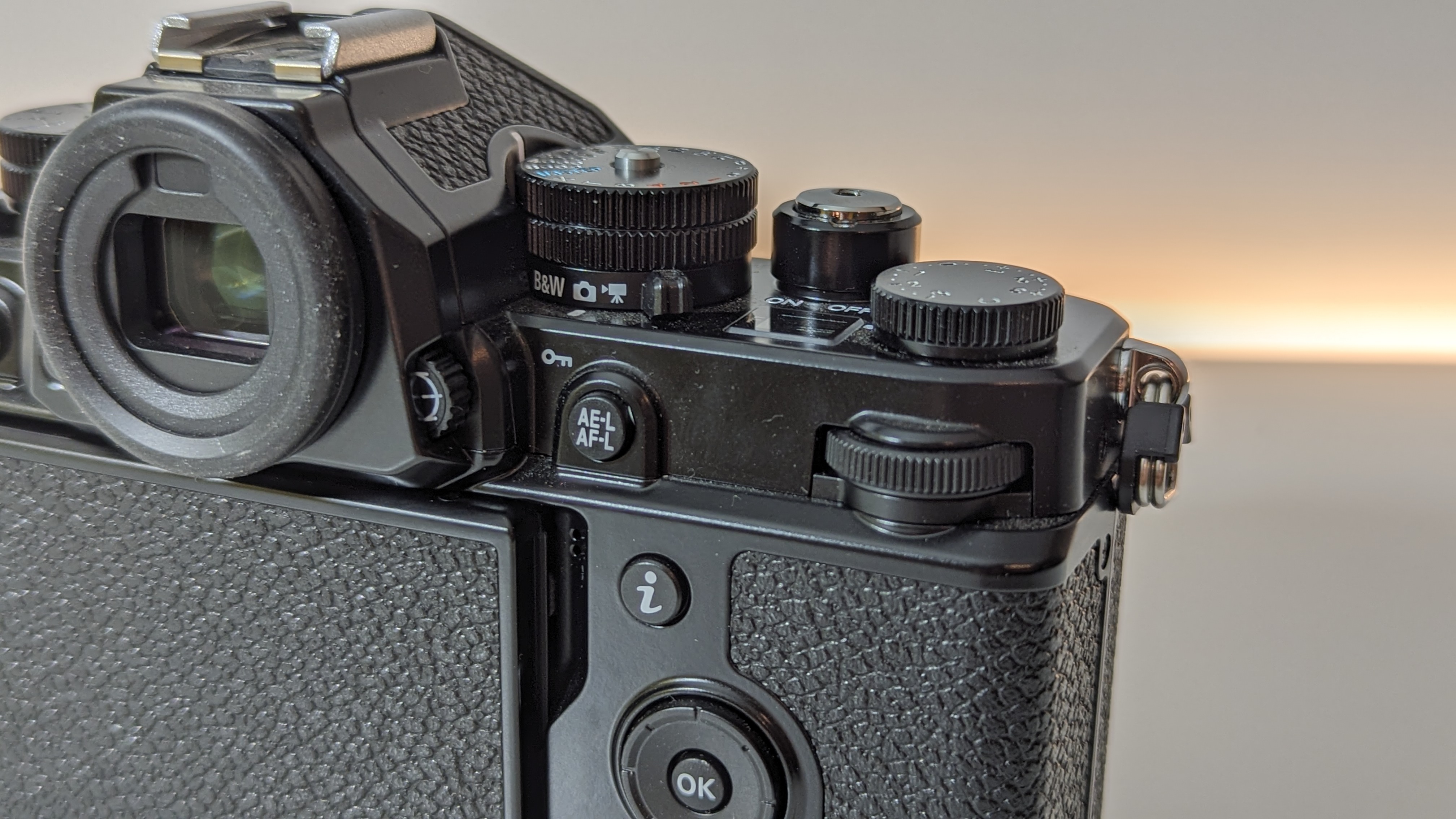
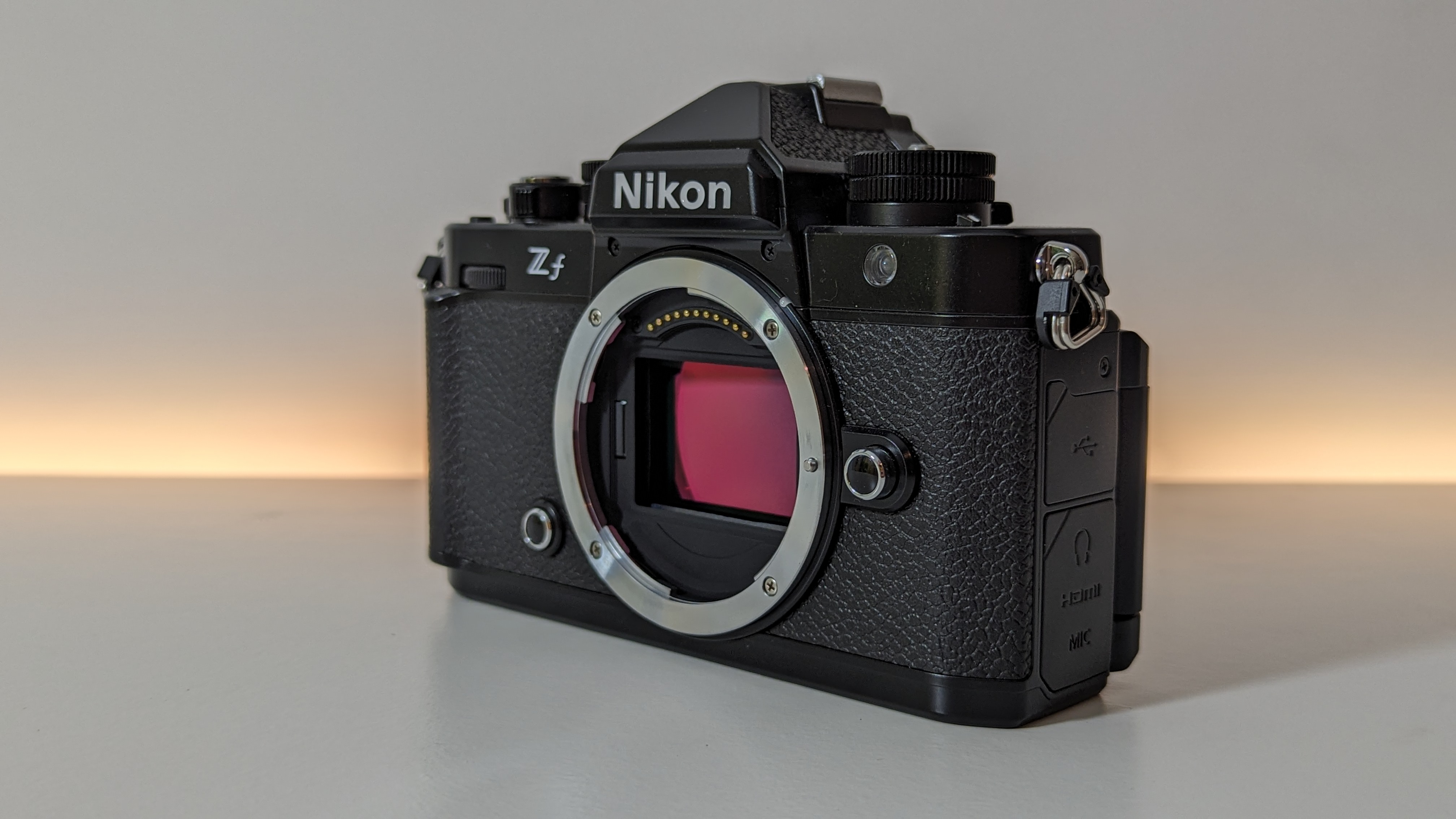
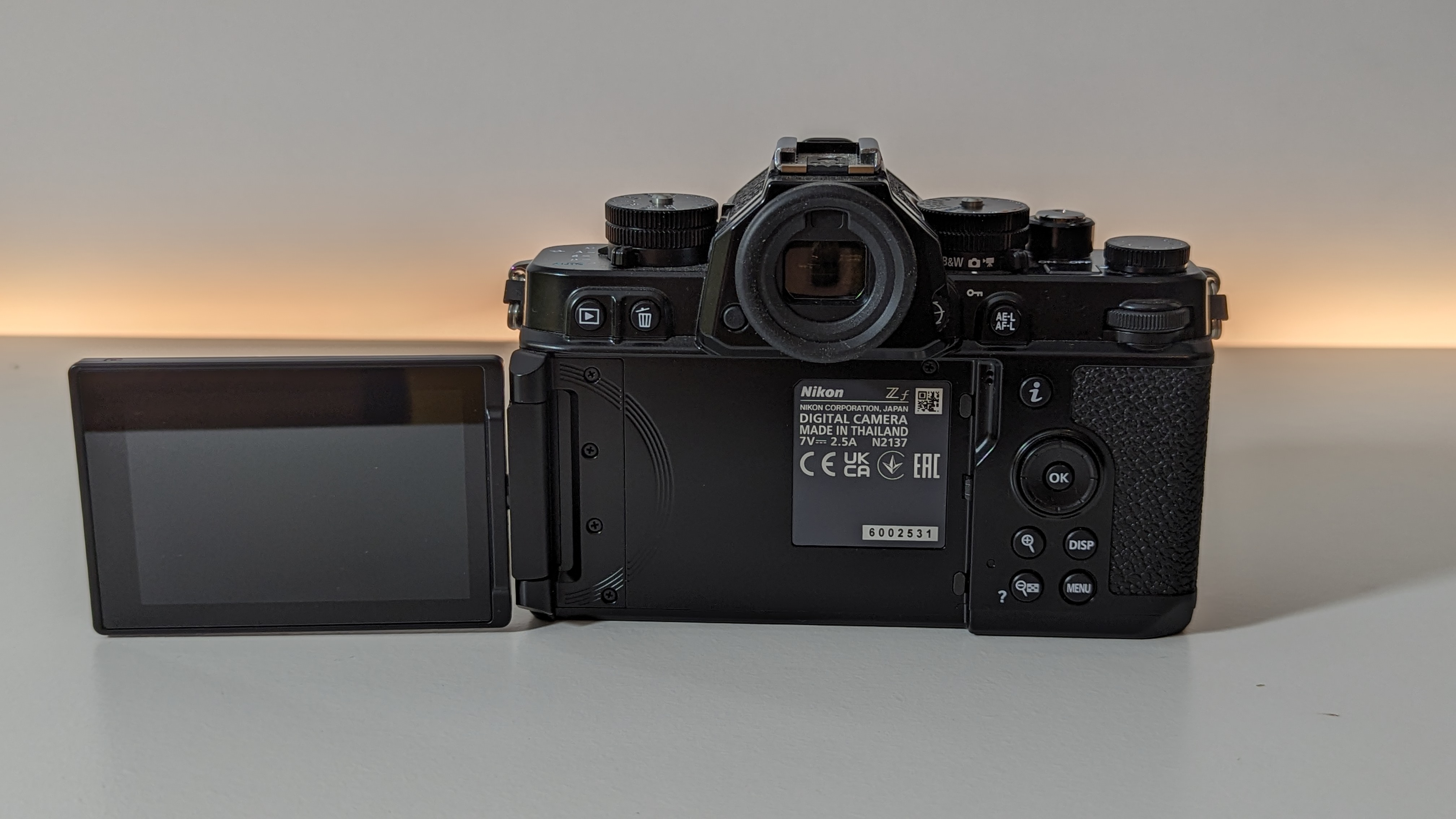
- Shallow grip may not please some
- A plethora of on-body controls
- Built to stand the test of time
The Nikon Zf is easily recognizable thanks to the utilization of numerous metal on-body dials. There's a dial or switch for almost everything, including changing the ISO, switching between stills and video, jumping into black-and-white mode, and adjusting the shutter speed and ISO sensitivity. The tactile dial and switch controls provide satisfying audible feedback when you use them. They feel robust and are of high quality, so you don't have to worry about being too gentle with them when you're in flow.
The dials aren't there just to be aesthetically pleasing; they are efficient. As with most tools, gadgets, and machines, the more you use them, the less you have to consciously think about what you're doing. You'll quickly find that adjusting your commonly used settings becomes second nature, which can only be beneficial to speeding up your workflow — no need to navigate different menus for every shot you take. Though it detracts from the vintage aesthetic a little, the fully articulating touchscreen is a pleasing and practical inclusion for most photographers.

One thing that can be frustrating with modern technology is how quickly things change. With each update, the software interface you've been used to is likely to have been reorganized or changed in design or color, making it more challenging to find the features you need quickly, slowing down your workflow. But with the Zf, you don't have to worry about that. The dedicated dials and buttons are built to last, with numbers and letters physically etched into them, so you can be sure you only have to learn how to use everything just once.
Sensor: FX CMOS 24MP
Lens mount: Z mount
ISO range: 100-64000 (expandable to 204,800)
Video: 4K UHD 30p
Weight: 1 lb 9.1 oz / 710 g
Memory card slots: 1x SD UHS-II, 1 x MicroSD UHS-I
The Nikon Zf is a stunning camera, with its classic styling summoning nostalgic memories from years gone by. The vintage-inspired texture is also nice to look at and touch and helps with grip. We like the tiny LCD window that displays the current f/stop, too.
Breaking space news, the latest updates on rocket launches, skywatching events and more!
Something that caused much discussion across various photography forums is the threaded shutter release button so users can add their own soft shutter release, something that is said to help dampen unwanted vibrations — especially useful for low-light shooters who shoot with longer shutter speeds.
Nikon has their branded AR-11 soft shutter release (originally developed for the Nikon Df), but there are plenty of versions that come in different colors and materials. Speaking of which, the Zf is available in a variety of colors, too — blue, green, gray, orange, red, and, of course, classic black. There's sure to be one to match your personal style.
Nikon Zf: Performance

- Impressive autofocus operates in the dark
- -10EV is practically unheard of at time of writing
- Excellent low-light capabilities and image noise handling
During our tests, we were particularly impressed with the speed and reliability of the autofocus. It was able to move smoothly and consistently between subjects, all the while managing to take up to 14FPS (JPEG) still photographs using the mechanical shutter.
The autofocus' success is attributed to its utilization of Deep Learning technology, which enables it to accurately identify and track individuals, cats, birds, bicycles, airplanes and so on.
The fact it can autofocus down to a ludicrous -10EV further contributes to its effectiveness. To put that figure into perspective, this refers to the lowest light level it can automatically accurately focus on, and -10EV is the lowest of any Nikon has ever produced, even lower than the Nikon Z8 that sits at the top of our best cameras guide.


The entire ISO range of 100-64,000 (expandable to 204,800) is the widest range among Z series cameras; even the Z8 'only' has an ISO range of 64-25,600 (expandable to 102,400) for comparison. During testing, we were impressed with the relatively low levels of noise, even when pushing the ISO extremely high, something that simply wasn't possible to do on the likes of DSLRs in the 2010s.


Nikon Zf: Functionality
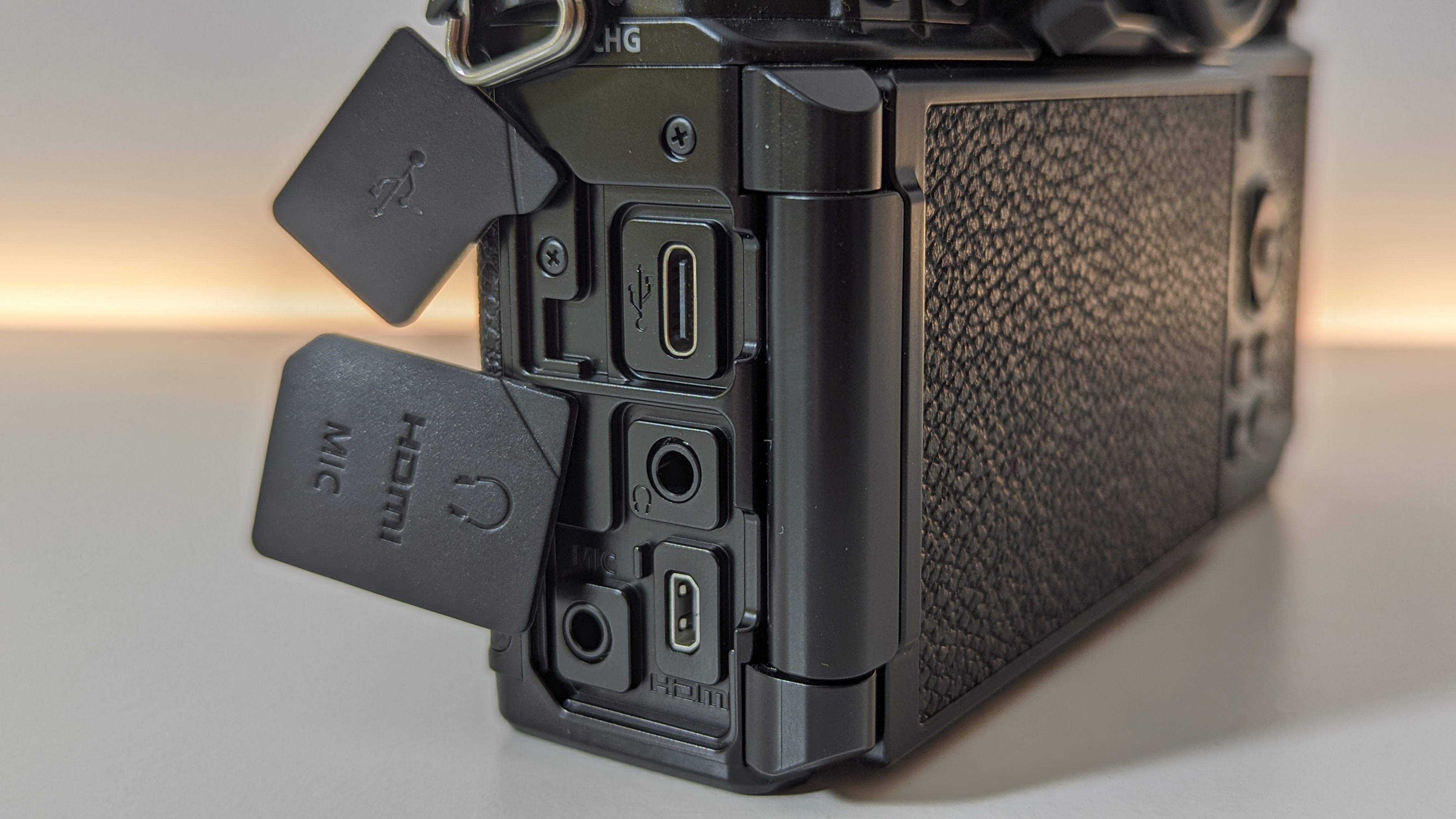
- MicroSD slot only conforms to the slower UHS-I standard
- We'd prefer a tilting screen
- The grip is a little shallow
It's difficult to find anything 'wrong' with this camera apart from really splitting hairs. Some users might find the shallow grip uncomfortable or inconvenient, although you could purchase the SmallRig grip adapter to extend it and make it more comfortable if you'd prefer a deeper grip.
Nikon has combined the battery compartment with the card slot, although disappointingly the MicroSD slot only conforms to the slower UHS-I standard. On the left-hand side, you'll find two 3.5mm jack sockets, one for headphones and one for a microphone. In addition, there's also a micro HDMI port for video output and a USB-C port.
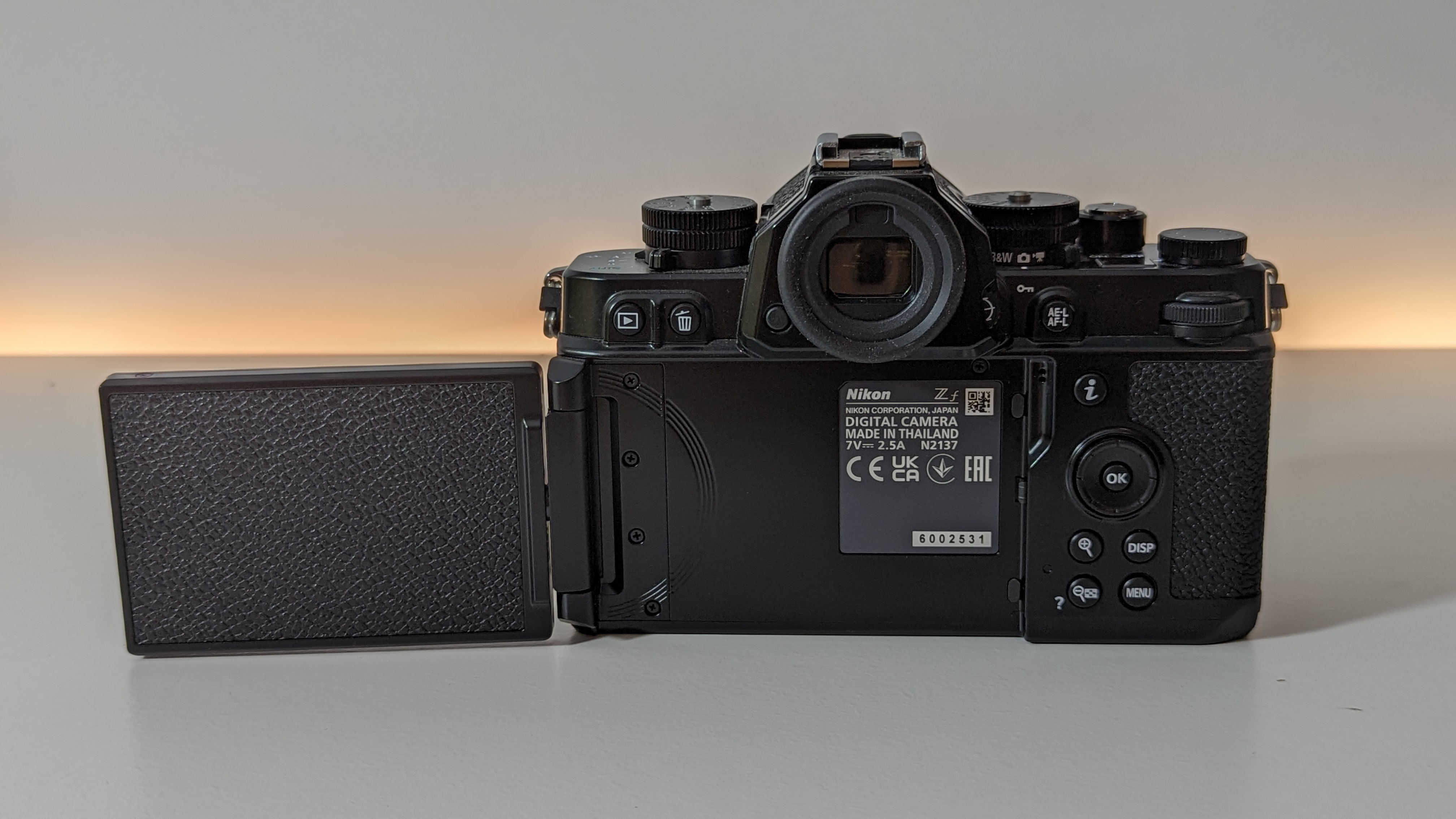
The 24.5MP full-frame sensor in the Zf isn't anything to shout about, but still, it's extremely capable of producing highly detailed images with excellent dynamic range. Some will quibble over the detail captured, but for the price we think it's more than acceptable.
The overall build quality is high, and it feels solid in hand. Just one little niggle we have is that it is a little frustrating to have to fold out the articulating touchscreen to take high or low-angle shots, we'd prefer a tilting screen, but that is just our preference; we also think tilting screens are a little more rugged and less likely to get bent or snapped.
Should you buy the Nikon Zf?
We'd happily recommend the Nikon Zf as a stylish, vintage-looking camera for those who like this aesthetic but want impressive tech to give them the best chance of capturing stunning photos. It certainly looks and feels the part, and it performs as well as it looks.
If you're someone who wants heaps of pixels for producing huge prints, you might find the 24.5MP sensor a little underwhelming, although the fact it is full frame will appeal to many who want full-frame lenses or look to upgrade their gear in the future. It will certainly produce high-quality prints, but the resolution isn't the stand-out performer here.
It boasts impressive specs for a camera that costs less than $2000, especially the unrivaled low-light performance in terms of ISO range and autofocusing sensitivity.
If this product isn't for you
If you're specifically looking for a camera with a retro aesthetic but don't want to hand over quite so much cash, the Nikon Z fc which we previously reviewed could be worth a look. It has a similar look and feel, with vintage-style dials and buttons. It is much more affordable, but it is an APS-C crop sensor rather than a full frame. That said, the inherent 1.5x magnification might be more desirable for bird and aviation photographers using telephoto lenses.
We appreciate the retro look of the Nikon Zf isn't for everyone, and fortunately, Nikon has a whole host of professional-grade cameras that might be more to your liking.
We would always recommend, for those who have a huge budget, the Nikon Z8. It still sits at the top of our best cameras guide and is also the best mirrorless camera overall. For wedding and wildlife photographers, we'd also like to throw the Nikon Z9 into the mix, though you'll have a steeper initial investment for that one, but it comes with improved buffer and shooting speeds for professionals and action shooters.

Jase Parnell-Brookes is the Managing Editor for e-commerce for Space and Live Science. Previously the Channel Editor for Cameras and Skywatching at Space, Jase has been an editor and contributing expert across a wide range of publications since 2010. Based in the UK, they are also an award-winning photographer and educator winning the Gold Prize award in the Nikon Photo Contest 2018/19 and named Digital Photographer of the Year in 2014. After completing their Masters degree in 2011 and qualifying as a teacher in 2012, Jase has spent the last two decades studying and working in photography and publishing in multiple areas, and specializes in low light optics and camera systems.
- Tantse WalterContributing Writer

